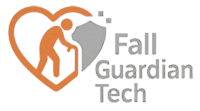To ensure safe and worry-free outings for seniors, we’ve compiled detailed guidelines focusing on fall prevention and situational awareness.
I. Core Principles: “Slow and Steady”
- Pace and Focus:
- Avoid rushing or taking large strides. Move slowly to prevent dizziness or imbalance.
- Stay attentive to ground obstacles (e.g., uneven surfaces, debris) while walking.
- Light Adaptation:
- Pause for 1–2 minutes when transitioning between bright and dark areas (e.g., entering/exiting buildings) to adjust vision and avoid missteps.
- Health Symptoms:
- If feeling dizzy, short of breath, or experiencing chest pain, stop immediately. Rest against a stable support (e.g., wall, bench) or seek help. Call 911 if symptoms persist.
II. Transportation and Environment Safety
- Public Transit:
- Avoid rush hours to reduce crowding risks.
- Wait for buses/vehicles to stop completely before boarding or exiting.
- Personal Vehicles:
- Do not ride or operate bicycles, e-scooters, or motorcycles due to balance risks. If cycling is unavoidable:
- Wear a helmet and use bike lanes.
- Dismount and walk when crossing streets.
- Do not ride or operate bicycles, e-scooters, or motorcycles due to balance risks. If cycling is unavoidable:
- Environmental Hazards:
- Limit outings during rain, snow, or nighttime due to poor visibility/slippery surfaces.
- Avoid crowded areas to prevent tripping or jostling.
III. Stair Safety: “Hold, Look, Step”
Follow these steps for stairs or uneven terrain:
- Hold the handrail firmly for support.
- Look down to confirm step stability and footing.
- Place your entire foot flat on the step before shifting weight.
- Take one step at a time; never skip stairs.
- Avoid steep staircases. If unavoidable, use a cane or walker.
Staircase Maintenance Tips:
- Ensure adequate lighting and clutter-free paths.
- Install non-slip strips or bright edge markings on steps.
- Add resting chairs on landings for multi-story buildings.
IV. Five Essential Items for Safe Outings
Prepare these to handle emergencies:
- Companionship: Have family/friends accompany high-risk seniors.
- Mobility Aid: Use a cane (standard or quad-base for stability) or walker.
- Medication Kit: Carry nitroglycerin, inhalers, or other emergency meds with usage instructions.
- Emergency Tools:
- A whistle to alert others if fallen.
- A charged phone with speed-dial settings for 911, family, or doctors.
- ID/Health Card: Wear a visible card listing:
- Name, address, and emergency contacts.
- Medical conditions (e.g., diabetes, heart disease) and allergies.
Sources: (traffic safety), (fall prevention), (emergency prep).
